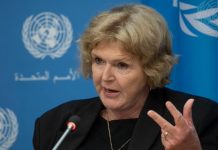Gwadar Port, once envisioned as a key success of China’s Belt and Road Initiative (BRI), remains underutilized and fraught with challenges nearly two decades after its launch, according to a recent report by Deutsche Welle (DW).
In November 2016, then-Prime Minister Nawaz Sharif inaugurated Gwadar Port, proclaiming it the “dawn of a new era” for Pakistan. This event also marked the operational start of the China-Pakistan Economic Corridor (CPEC), a flagship project within the BRI framework aimed at linking China’s western Xinjiang province to the Arabian Sea.
The strategic goal was to bypass the contentious Malacca Strait and reduce trade route lengths by connecting China’s Xinjiang province with the sea via Pakistan. Pakistan anticipated increased trade, enhanced infrastructure, and industrial growth along the 2,000-kilometer corridor (1,240 miles), all financed by China.
Completed in 2007 and handed over to a Chinese operating company in 2013, Gwadar’s deep-sea port was to become the heart of the CPEC, integrated into a new special economic zone intended to transform Gwadar into a bustling port city. However, the promised transformation has yet to materialize, according to the DW report.
Despite its completion in 2007, Gwadar Port has seen minimal activity. DW’s analysis reveals that Gwadar has only handled 22 ships in its best year, a stark contrast to Nigeria’s Lekki Port, which received 26 ships in its first year of operation in 2023.
Azeem Khalid, an assistant professor at COMSATS University Islamabad, highlighted the port’s potential, noting that Gwadar could host larger ships than Karachi and sits at the crossroads of global oil trade routes. However, the lack of substantial investment and supporting infrastructure, such as roads and railways, has stymied its development. Khalid pointed out that a promised $1.6 billion expansion in 2015 has seen little progress.
Publicly, investors like the China Pakistan Investment Corporation continue to promote Gwadar as a focal point for trade. However, the empty port contradicts these claims. Both Pakistani and Chinese stakeholders have grown disillusioned with the project. “Job promises were not met. Industrial promises were not met. The business opportunities for Pakistanis were not met,” Khalid explained.
Furthermore, DW’s investigation found that China has invested in at least 38 ports worldwide since 2000, with 43 more planned or under construction. This pattern often involves building new ports close to existing ones to supplement or replace them, as seen with Cameroon’s Kribi Port replacing Douala and Nigeria’s Lekki Port supplementing Lagos. Gwadar and Karachi reflect this trend.
Jacob Mardell, a former analyst at the Mercator Institute for China Studies, explained that the financial model used in these projects typically benefits Chinese companies while the financial burden falls on the host countries. He described this model as a subsidy for Chinese firms, where Chinese banks loan money to governments that then pay Chinese construction companies, with the loans ultimately repaid by the host country’s taxpayers.
Countries like Pakistan are now stuck paying back large amounts of debt to Chinese lenders. “Pakistan has to pay billions of dollars back in loans because of reckless investments in the name of CPEC,” said Khalid. Similar cases have previously led to criticism that China is conducting “debt-trap diplomacy,” allowing partner countries to incur unsustainable amounts of debt to gain political influence.
Moreover, part of the revenue from the newly built projects also goes back to China. “China gets the lion’s share of everything,” Khalid said, referring to CPEC investments. With Gwadar Port, for instance, 90% of the limited revenue goes to the Chinese operating company. The Pakistani government receives 10%, while nothing goes to Balochistan’s regional government.
The DW report highlights that Gwadar’s struggles mirror broader issues within CPEC. “Some of these problems are specific to the border region of Balochistan, where Gwadar is situated. It is among the poorest regions of Pakistan and has strong separatist militias that commonly carry out attacks, including some that have specifically targeted Chinese nationals,” said Mardell.
This instability, coupled with Pakistan’s ongoing economic crisis and political instability, including the ousting of former Prime Minister Imran Khan in 2022, has further impeded progress on CPEC. The political and security situation in Pakistan has deteriorated, further hampering the initiative, according to Mardell.
Mardell suggested that China might have underestimated the challenges in Pakistan. He noted that while China has traditionally been willing to invest in high-risk projects, the experiences with the BRI and CPEC might lead to more cautious future investments. “I just don’t think they fully understood the situation in Pakistan going in,” said Mardell, though he believes this might change for other projects going forward. “I think they’ve learned from their mistakes with the BRI and with CPEC, and they’re probably more reluctant to commit capital nowadays.”
Despite these setbacks, China remains invested in CPEC due to Pakistan’s strategic importance. Mardell believes that while major investments may slow, China will continue to support Gwadar and other CPEC projects to maintain its influence and commitments. “There’s no way that China will lose face and admit that it’s a disaster. And pulling out of CPEC and abandoning Pakistan isn’t an option now. They’re in too deep, and Pakistan is too important an ally,” he said.




























